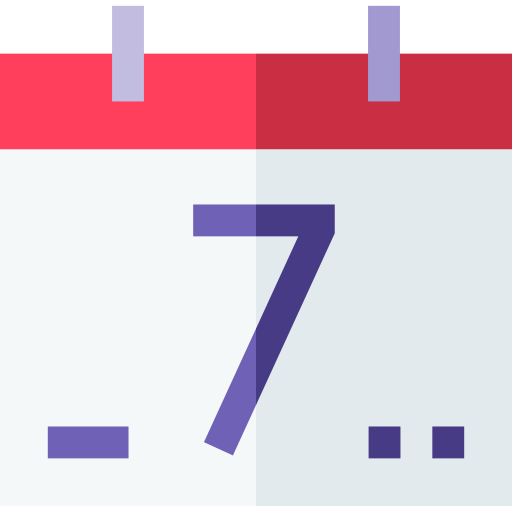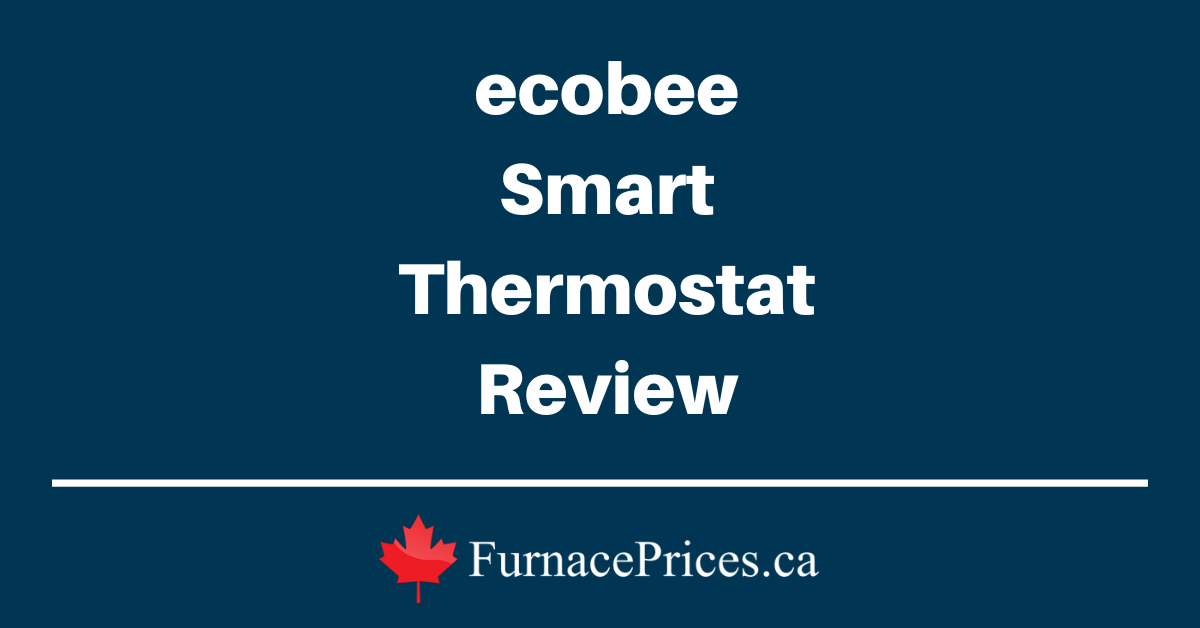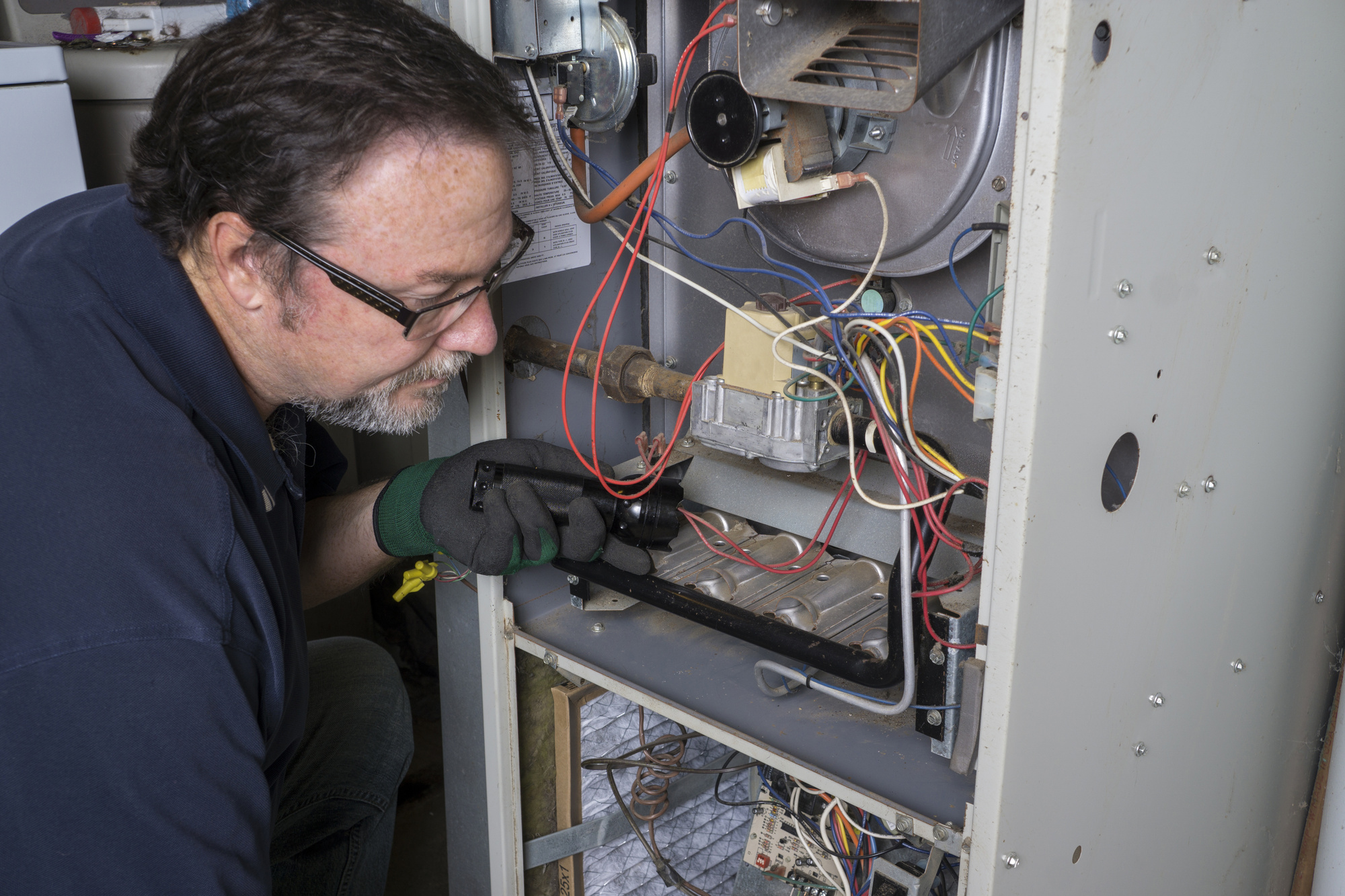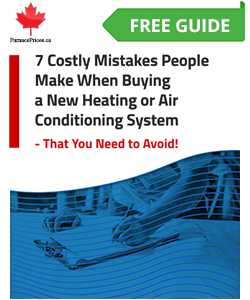More than half of Canadians rely on natural gas furnaces to heat their homes, with 51% of households using a forced air furnace as their primary heating system.
It’s important to note that the cost of heating, including natural gas, has risen in Canada. For instance, the price of natural gas saw a year-over-year increase of 23.7%.
Hence, choosing the best furnace impacts not only your home’s comfort, but also energy bills, and maintenance costs.
That’s why we’ve analyzed extensive data on the latest furnace brands and models available in Canada for 2024. Let’s explore the top furnace choices that promise warmth and efficiency.
What to Look For in a Furnace?
A reliable furnace has less to do with the brand and more with the individual unit. Only a handful of companies own most of the HVAC brands you’re familiar with, so overall most brands are quite similar.
Here are the top things to consider when you’re buying a new heating system:
- High AFUE: This means the furnace uses less energy, so your bills go down.
- Two-stage or Modulating: These furnaces are quieter, save more energy, and keep your house at a steady, comfy temperature.
- Variable-speed Blower Motor: Also quiet, energy-saving, and boosts comfort.
- Great Warranty: Look for good warranty coverage—it can save you money in the long run.
- Budget-friendly: Choose what works for your wallet, whether basic, mid-range, or high-end.
- Additional Features: Some furnaces have extras like Wi-Fi control and noise reduction.
- Right Size: Make sure it fits your home and heating needs.
- Professional Installation and Maintenance: Have experts install and look after your furnace.
- Quality Materials: Like furnaces with stainless steel heat exchangers.
- Trusted Dealer: Find a reliable HVAC dealer for buying and servicing.
If your furnace is over 15 years old, frequently needs repairs, or your energy bills are high, it’s probably time to replace it. If it’s younger and the repairs are minor, then just repair it.
Request a free estimate from our Certified Local HVAC Contractors to find an experienced high-quality company for furnace installation and maintenance.
How We Assess the Most Reliable Furnaces
When evaluating furnace reliability, our assessment focuses on several key factors:
Warranty Coverage: We consider warranty terms as the main gauge of reliability for furnaces. A good warranty means the company believes in its furnace and will back it up. It’s like a promise that you’re getting a quality product.
Technical Specifications: We scrutinize the technical details of each furnace model, including:
- BTU output
- Material quality
- Design features
- Energy efficiency
- Additional features like WiFi control, zone control capability, air-purifiers, noise reduction, etc.
Installation and Maintenance Standards: We check out the HVAC teams behind the brands to ensure they’re doing things right. Proper setup and regular check-ups mean fewer headaches down the road.
Customer Feedback Analysis: We sift through what other Canadians say about their furnaces. Our teams pay particular attention to consistent patterns in performance and service quality.
Industry Reputation: We weigh what other professionals think about the brand. If a furnace has a good rep among experts, it’s probably a safe bet.
A-List Canada’s Best Furnace Brands Worth Having
This list represents Canada’s top furnace brands, ranked by their ascending average ratings. It showcases brands renowned for their quality and customer satisfaction, each with average price of the furnace.
Average furnace prices in Canada range between $4,000 and $6,500, including installation. Furnaces typically last 15 to 30 years on average.
The furnaces we rank and recommend in this guide range in BTU output from 40,000 to 100,000+.
Get Quotes
How soon are you looking to buy?*



Amana
Rating: 4.4/5.0
Average Price: $5,584
Amana, a notable American furnace brand, offers a range of efficient gas furnaces, with models achieving up to 96% AFUE. Key features include durable stainless-steel heat exchangers, quiet multi-speed motors, and self-calibrating modulating gas valves.
Amana provides a substantial warranty, including a lifetime unit replacement for original homeowners and a 10-year limited parts warranty.
Carrier
Rating: 4.5/5.0
Average Price: $5,217
Carrier, a leader in heating and cooling since 1902, offers a range of efficient furnaces across three lines:
- The premium Infinity series (up to 98.5% AFUE)
- The mid-range Performance series (up to 96.5% AFUE)
- The budget-friendly Comfort series (above 80% AFUE)
Notable models include the Carrier Infinity 96 59TN6 (Best budget-friendly option), offering 96.7% AFUE, and the highly efficient Carrier Infinity® 98 59MN7 at 98.5% AFUE.
They come with a 10-year limited parts warranty and a 20-year or lifetime heat exchanger warranty, subject to registration.
Lennox
Rating: 4.5/5.0
Average Price: $5,871
With a history of furnaces that span back over a century, Lennox has established itself as a staple in the American furnace industry, offering top-end central air units and whole-home furnaces. The brand is particularly noted for its Energy Star certified gas and oil furnaces.
Lennox furnaces are divided into three distinct series: Merit, Elite, and the Dave Lennox Signature Collection (up to 98.7% AFUE in its top models). Lennox Dave Lennox Signature Collection SLP99V is one of the most-efficienct furnaces in Canada with around 99% efficiency.
Despite the higher price tag, the brand’s reputation for dependability and advanced technology makes it a valuable furnace brand option in Canada.
Warranty coverage varies across different products but typically includes a 20-year to lifetime limited warranty on heat exchangers and a 5-to-10-year limited warranty on certain parts.
Daikin
Rating: 4.5/5.0
Average Price: $6,686
Daikin is a Japanese HVAC leader globally recognized for their air conditioners. However, some Canadian homeowners buy their furnaces as their preferred home-heating systems.
Each Daikin furnace boasts a minimum efficiency of 80% AFUE, with many models exceeding 95% AFUE and earning Energy Star certification. Some customers report 12-15% gas savings over the year.
If you’re looking for an energy-efficient furnace, consider Daikin DM97MC with 98% efficiency.
Daikin offers a limited lifetime heat exchanger warranty, a 12-year limited lifetime warranty for parts, and a 6- or 12-year unit replacement warranty, depending on eligibility.
Goodman
Rating: 4.6/5.0
Average Price: $4,312
Goodman’s product line is American-made and features robust, heavy-duty tubular heat exchangers constructed from aluminized-steel or stainless-steel. All Goodman furnaces have an Annual Fuel Utilization Efficiency (AFUE) of at least 80%, with many models exceeding 92% AFUE.
In 2022, Goodman was recognized as the best furnace brand in the value price tier. ENERGY STAR rated models, CoolCloud app, and the ComfortNet™ System with touchscreen display are among the features that contribute to Goodman’s standing.
Goodman GMVM97 is an economic alternative to Amana AMVM97 with ComfortBridge communicating technology and self-diagnostics.
Napoleon
Rating: 4.6/5.0
Average Price: $5,725
Napoleon is an Ontario-based furnace company including features such as quiet operation, air purification, and easy maintenance.
Although their highest AFUE (Annual Fuel Utilization Efficiency) rating is an impressive 97%, it falls slightly short of the 98-99% efficiency levels achieved by some competing brands. Its best furnace model is Napoleon 9700 with Wi-Fi capability and has WHISPER QUIET operation.
Napoleon’s warranties vary by model but generally include a limited 10-year parts warranty and a 10- or 15-year heat exchanger warranty, adding value and peace of mind for consumers.
Trane
Rating: 4.7/5.0
Average Price: $5,494
While Trane’s furnaces are on the pricier side, they embody over 100 years of experience in creating high-quality, dependable products.
In terms of warranties, Trane’s coverage is standard for the industry and comparable to other high-end brands, but not as extensive as some economy brands. Their top-tier model reaches an AFUE of 97.3%, slightly below the 98-99% offered by some competitors.
Trane S9X2 has some advanced furnace features such as dual fuel compatibility, secondary heat exchanger, self-diagnostics, and Vortica II blower.
Read our guide on Furnace Buying Tips
Are There Any Furnace Brands to Avoid?
While certain brands like American Standard, Luxaire, or Tempstar have somewhat lower reviews from homeowners, the sample sizes are very small. What this suggests mostly, is that they are simply less popular than other major brands.
And ultimately, this highlights the importance of who is INSTALLING the furnace more than just the brand you choose.
Choosing an established and reliable company with well-trained installers is every bit as important as the brand, especially since a good company will be there if and when anything does go wrong.
So while there aren’t really any brands you should outright avoid, it may be best to choose common brands that are widely sold, this will ensure parts are easily available, and finding someone with experience servicing them won’t be difficult.
Furnaces With the Best Warranty Coverage
By default, every furnace in Canada comes with a basic five-year parts warranty and a 20-year heat exchanger warranty. You can extend those terms by registering your furnace after installation. A dependable contractor can do this for you.
The best furnace warranties stand out by offering the following:
- Coverage for parts and heat exchangers
- Unit replacement warranties
- Labour warranties
Here’s a breakdown of the furnaces with the best warranty coverage in 2024:
- York Affinity™ Series YP9C and Luxaire LP9C
- Coleman Echelon CP9C
- Daikin DM97MC and DC97MC
- Amana AMVM97 and ACVM97
- KeepRite Ion 96 G96CTN
- Ruud EcoNet™ Ultra® U98V
- Rheem Prestige Series Modulation R98V
The Best Furnaces by Budget
Fortunately, the market offers a variety of high-quality furnaces across different price ranges. Let’s explore some of the top affordable options categorized by their price range, efficiency, and standout features:
| Brand/Model | AFUE | Price Range | Top Qualities |
|---|---|---|---|
| York LX Series TM9E | 95% | $3,000 – $3,835 | Single-stage, compact, self-diagnostics |
| Goodman GMVC96 | 96% | $3,835 – $4,670 | Two-stage, variable-speed, ComfortBridge technology |
| Comfortmaker QuietComfort - G96VTN | 96% | $3,665 – $4,330 | Two-stage, variable-speed blower motor, quiet operation |
Furnace rental can be a cheaper option upfront, but in the long run, it’s usually more cost-effective to just buy the furnace outright. Rentals end up costing more over time with extended payment periods.
Another economical option would be buying a used furnace. However, it’s more likely to break down sooner and won’t be covered under warranty.
Here are some more low cost furnace options in Canada.
The Best High-Budget Furnaces
When it comes to high-budget furnaces, the focus is on exceptional efficiency, advanced features, and overall quality.
| Brand/Model | AFUE | Price Range | Top Qualities |
|---|---|---|---|
| American Standard Gold S9V2-VS | 97% | $5,750 – $7,000 | Two-stage, variable-speed, Vortica II blower, Comfort-R dehumidification, ENERGY STAR certified |
| Bryant Evolution 96 - 986T | 96.7% | $4,600 – $6,000 | Two-stage, variable-speed, dirty filter detection, Perfect Heat™ and Perfect Humidity™ technology, secondary heat exchanger |
| Carrier Infinity 96 59TN6 | 96.7% | $4,500 – $6,000 | Two-stage, variable-speed, communicating, compatible with Infinity control, Ideal Humidity System™ technology, ENERGY STAR certified |
| Lennox SL297NV | 97.5% | $5,170 – $7,500 | Two-stage burner, ultra-low NOx emissions, variable-speed, smart thermostat compatible, SilentComfort™ technology. |
| Trane S9V2-VS | 97% | $4,665 – $5,830 | Two-stage, secondary heat exchanger, Comfort-R technology |
Best Features to Look Out in Furnaces

Most Efficient Furnaces
The government has mandated that all natural gas furnaces sold here must have an Annual Fuel Utilization Efficiency (AFUE) of 95%+.
A high-efficiency model means lower energy bills. However, the difference between a 95 and 98% AFUE furnace won’t be all that much. But the more efficient models have better components that deliver more consistent and quieter heating.
Let’s look at the most energy-efficient furnaces in Canada with their AFUE rating in 2024:
| Brand/Model | AFUE Rating |
|---|---|
| Goodman GMVM97 | 98% |
| Daikin DM97MC | 98% |
| Amana AMVM97 | 98% |
| York Affinity YP9C | 98% |
| Luxaire LP9C | 98% |
| KeepRite Ion 98 – G97CMN | 98% |
| Comfortmaker Ion 98 – G97CMN | 98% |
| Coleman CP9C | 98% |
| Ruud EcoNet Ultra U98V | 98% |
| Bryant Evolution 98 – 987M | 98.3% |
| Carrier Infinity® 98 59MN7 | 98.5% |
| Rheem Prestige R98V | 98.7% |
| Rheem Prestige R98V | 98.7% |
| Lennox Dave Lennox Signature Collection SLP99V | 99% |
How to Know If Your Furnace Is Energy Efficient?
To determine if your furnace is energy efficient, consider the following specific points:
- AFUE Rating: Check the Annual Fuel Utilization Efficiency (AFUE) rating. A higher rating (usually above 90%) indicates higher efficiency.
- ENERGY STAR® Certification: Look for the ENERGY STAR® label, which signifies the furnace meets strict energy efficiency guidelines set by the EPA.
- Age of the Furnace: Older furnaces (more than 15-20 years old) are typically less efficient. Newer models are designed with better energy-saving technology.
- Utility Bills: Compare your energy bills. Higher-than-average heating costs may indicate an inefficient furnace.
- Frequency of Repairs: Frequent repairs can be a sign of declining efficiency.
- Heating Performance: Uneven heating or long heating cycles can suggest inefficiency.
Getting the Most From Your Furnace
Choosing the right furnace is just the first step; ensuring it’s installed correctly is second but crucial. That’s where FurnacePrices.ca’s independent certification process comes in. We make it easy to select a skilled, licensed, and certified HVAC technician.
We will help you get the most out of your furnace investment, ensuring safety, efficiency, and long-term performance.
Get Quotes for Furnace Installation from Certified Local Contractors Today!
FAQs
What are the furnace types?
There are three main types of furnaces:
1. Gas Furnaces: These use natural gas and are popular for their efficiency and lower fuel costs. They’re ideal in areas where gas is readily available.
2. Electric Furnaces: These use electric heating elements to produce heat. They’re generally cheaper to install than gas furnaces but can have higher operating costs due to electricity prices.
3. Oil Furnaces: Less common, these use oil to generate heat. They are often used in areas where natural gas isn’t easily accessible. Oil furnaces require more maintenance and have higher fuel costs compared to gas furnaces.
What furnace size do I need?
The furnace size you need depends on your home’s size, climate, insulation quality, and other factors like ceiling height and window types.
What’s a variable-speed furnace?
A variable-speed furnace is one that has a variable-speed blower motor with many speed settings that can deliver air slowly, efficiently, quietly, and consistently depending on demand.
What’s an ECM motor?
An ECM motor is an electronically commutated motor that varies the speed using electronic controls. They’re quieter and more efficient than standard PSC motors. Natural Resources Canada has reported up to 70% less energy use with an ECM motor. It’s becoming more common for furnace manufacturers to equip all their furnaces (or at least a selection from every tier) with these more sophisticated motors.
Should I get a furnace with a modulating burner?
A furnace with a modulating burner is more sophisticated and more expensive because the gas control valve opens in increments. This results in better control over your comfort levels and improved energy efficiency. Modulating furnaces cost more, but they’re quieter and more consistent and cost less to operate.
What’s a secondary heat exchanger?
The furnace’s heat exchanger produces heat from burned gas. In order to produce more heat from the same amount of burned gas, some high-efficiency furnaces also have a secondary heat exchanger that traps and recycles heat from the exhaust gases. This secondary heat exchanger is usually made with stainless steel or lined with hard plastic to limit the negative effects of corrosive acidic condensates.
If you want a furnace with two heat exchangers, then look for condensing furnaces or furnaces with the feature dual heat exchange. This feature is becoming more common among entry-level and mid-range furnaces.
What’s the ignition system, and is one type better than another?
The ignition system is the component that starts the process of heating the air. Older furnaces typically used a pilot light. Modern furnaces will have an electronic ignition system that’s safer, more efficient, and more reliable that keeps your home warm and comfortable. The cream of the crop in terms of ignition systems is hot-surface ignition.
Is there a way a new furnace could improve my air quality?
Air filtration add-ons are a great way to improve the function and performance of your furnace while also improving indoor air quality. Some furnaces come with an electrostatic filter, which works by using an electrical charge to attract particles.
Other furnaces come with a HEPA (high-efficiency particulate air) filter or other proprietary filters. These filters work by reducing the amount of dust, dirt, allergens, pollutants, and contaminants that end up in the heating system. Some furnaces even come with special UV lamps that purify air. High-efficiency filters and UV lamps can be added to a furnace that does not include them.
My current furnace is really loud. Are new furnaces any quieter?
Most modern furnaces have special features and designs that reduce noise. Here are a few noise-reducing features that are included in many types high-efficiency natural gas furnaces:1. ECM Motor2. Variable Speed3. Two-Stage4. Modulating5. Insulated cabinets6. Soft-mounter blowers and motors7. Soft or gradual startup and stop.
What kind of warranty coverage should I look for in a new furnace?
The parts warranty: Even with annual furnace maintenance, parts can fail over time. Be sure to check the warranty to see which parts are covered.
The heat exchanger warranty: A broken heat exchanger is one of the costliest elements to repair, so it is important to ensure there is a heat exchanger warranty that protects you from an expensive repair.
The unit replacement warranty: This is a guarantee that the manufacturer will replace the entire furnace if the heat exchanger fails. These are offered in addition to heat exchanger warranties.
Years covered under warranty: Most regular (unregistered) plans typically last 10 years (limited). However, a lot of brands offer a registered warranty for the heat exchanger that lasts 20 years or up to the lifetime of the unit.
Registering a new high-efficiency natural gas furnace: You’ll have 60 to 90 days after installation to register, otherwise you’ll have a reduced or null and void warranty. A good HVAC contractor will take care of registration for you after they install the furnace!
Get Quotes
How soon are you looking to buy?*











